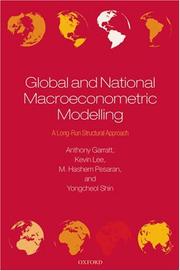| Listing 1 - 10 of 3562 | << page >> |
Sort by
|
Book
ISBN: 1504453557 Year: 2019 Publisher: New York, New York : IEEE,
Abstract | Keywords | Export | Availability | Bookmark
 Loading...
Loading...Choose an application
- Reference Manager
- EndNote
- RefWorks (Direct export to RefWorks)
A two-level code construction scheme for non-volatile memories (NVM) that is based on low-density parity-check codes is specified in this standard. This scheme constructs an auxiliary codeword that encodes a subset of bits from the primary packets stored in an NVM memory unit. The auxiliary codeword is decoded only when the detection of at least one of the primary codewords fails. The encoding and decoding techniques for this scheme are presented. The two-level scheme outperforms the traditional one-level method while it requires only a small memory overhead and negligible latency. Moreover, it outperforms the one-level scheme that uses a code that is twice as long in the low raw bit error rate regime.
Book
ISBN: 1728155886 1728155894 Year: 2019 Publisher: Los Alamitos, CA : IEEE,
Abstract | Keywords | Export | Availability | Bookmark
 Loading...
Loading...Choose an application
- Reference Manager
- EndNote
- RefWorks (Direct export to RefWorks)
Book
Year: 1982 Publisher: Southampton: University of Southampton,
Abstract | Keywords | Export | Availability | Bookmark
 Loading...
Loading...Choose an application
- Reference Manager
- EndNote
- RefWorks (Direct export to RefWorks)
Book
ISBN: 8787770008 9788787770002 Year: 1978 Publisher: Aarhus, Denmark: Aarhus Universitets konomiske institut,
Abstract | Keywords | Export | Availability | Bookmark
 Loading...
Loading...Choose an application
- Reference Manager
- EndNote
- RefWorks (Direct export to RefWorks)
Book
Year: 1995 Publisher: Louvain-la-Neuve: UCL. Center for operations research and econometrics,
Abstract | Keywords | Export | Availability | Bookmark
 Loading...
Loading...Choose an application
- Reference Manager
- EndNote
- RefWorks (Direct export to RefWorks)

ISBN: 9780199296859 0199296855 Year: 2006 Publisher: New York: Oxford university press,
Abstract | Keywords | Export | Availability | Bookmark
 Loading...
Loading...Choose an application
- Reference Manager
- EndNote
- RefWorks (Direct export to RefWorks)
Book
Year: 1988 Publisher: Cambridge: Cambridge university press,
Abstract | Keywords | Export | Availability | Bookmark
 Loading...
Loading...Choose an application
- Reference Manager
- EndNote
- RefWorks (Direct export to RefWorks)
Book
Year: 2006 Publisher: Washington, DC : World Bank,
Abstract | Keywords | Export | Availability | Bookmark
 Loading...
Loading...Choose an application
- Reference Manager
- EndNote
- RefWorks (Direct export to RefWorks)
By documenting the evolution of Tobin's q before, during, and after firms internationalize, the authors provide evidence on the bonding, segmentation, and market timing theories of internationalization. Using new data on 9,096 firms across 74 countries over the period 1989-2000, they find that Tobin's q does not rise after internationalization, even relative to firms that do not internationalize. Instead, q rises significantly before internationalization and during the internationalization year. But then q falls sharply in the year after internationalization, quickly relinquishing the increases of the previous years. To account for these dynamics, the authors show that market capitalization rises before internationalization and remains high, while corporate assets increase during internationalization. The evidence supports models stressing that financial internationalization facilitates corporate expansion, but challenges models stressing that internationalization produces an enduring effect on q by bonding firms to a better corporate governance system.
Book
Year: 2019 Publisher: Poland, Warsaw : De Gruyter,
Abstract | Keywords | Export | Availability | Bookmark
 Loading...
Loading...Choose an application
- Reference Manager
- EndNote
- RefWorks (Direct export to RefWorks)
The second edition of Non-extensive Entropy Econometrics for Low Frequency Series provides a new and robust power-law-based, non-extensive entropy econometrics approach to the economic modelling of ill-behaved inverse problems. Particular attention is paid to national account-based general equilibrium models known for their relative complexity.In theoretical terms, the approach generalizes Gibbs-Shannon-Golan entropy models, which are useful for describing ergodic phenomena. In essence, this entropy econometrics approach constitutes a junction of two distinct concepts: Jayne's maximum entropy principle and the Bayesian generalized method of moments. Rival econometric techniques are not conceptually adapted to solving complex inverse problems or are seriously limited when it comes to practical implementation.Recent literature showed that amplitude and frequency of macroeconomic fluctuations do not substantially diverge from many other extreme events, natural or human-related, once they are explained in the same time (or space) scale. Non-extensive entropy is a precious device for econometric modelling even in the case of low frequency series, since outputs evolving within the Gaussian attractor correspond to the Tsallis entropy limiting case of Tsallis q-parameter around unity. This book introduces a sub-discipline called Non-extensive Entropy Econometrics or, using a recent expression, Superstar Generalised Econometrics. It demonstrates, using national accounts-based models, that this approach facilitates solving nonlinear, complex inverse problems, previously considered intractable, such as the constant elasticity of substitution class of functions.This new proposed approach could extend the frontier of theoretical and applied econometrics.
Book
Year: 2021 Publisher: Paris (5 Rue Laromiguière 75005) : Dunod,
Abstract | Keywords | Export | Availability | Bookmark
 Loading...
Loading...Choose an application
- Reference Manager
- EndNote
- RefWorks (Direct export to RefWorks)
La 11e édition de ce manuel traite, grâce à une constante mise à jour, de tous les grands domaines de l'économétrie moderne ainsi que de l'ensemble des tests statistiques qui en sont issus. Chaque chapitre présente de manière claire et pédagogique : les objectifs de connaissance et les concepts à maîtriser ; un cours assorti de nombreux exercices pour mettre rapidement en pratique les connaissances théoriques et se préparer aux examens ; une rubrique L'essentiel pour retenir les points clés du chapitre. En complément, les données des exercices pour s'entraîner à utiliser les logiciels d'économétrie Stata, Eviews, Gretl et le tableur Excel sont disponibles en ligne sur le site de l'auteur : regisbourbonnais.dauphine.fr
| Listing 1 - 10 of 3562 | << page >> |
Sort by
|

 Search
Search Feedback
Feedback About UniCat
About UniCat  Help
Help News
News